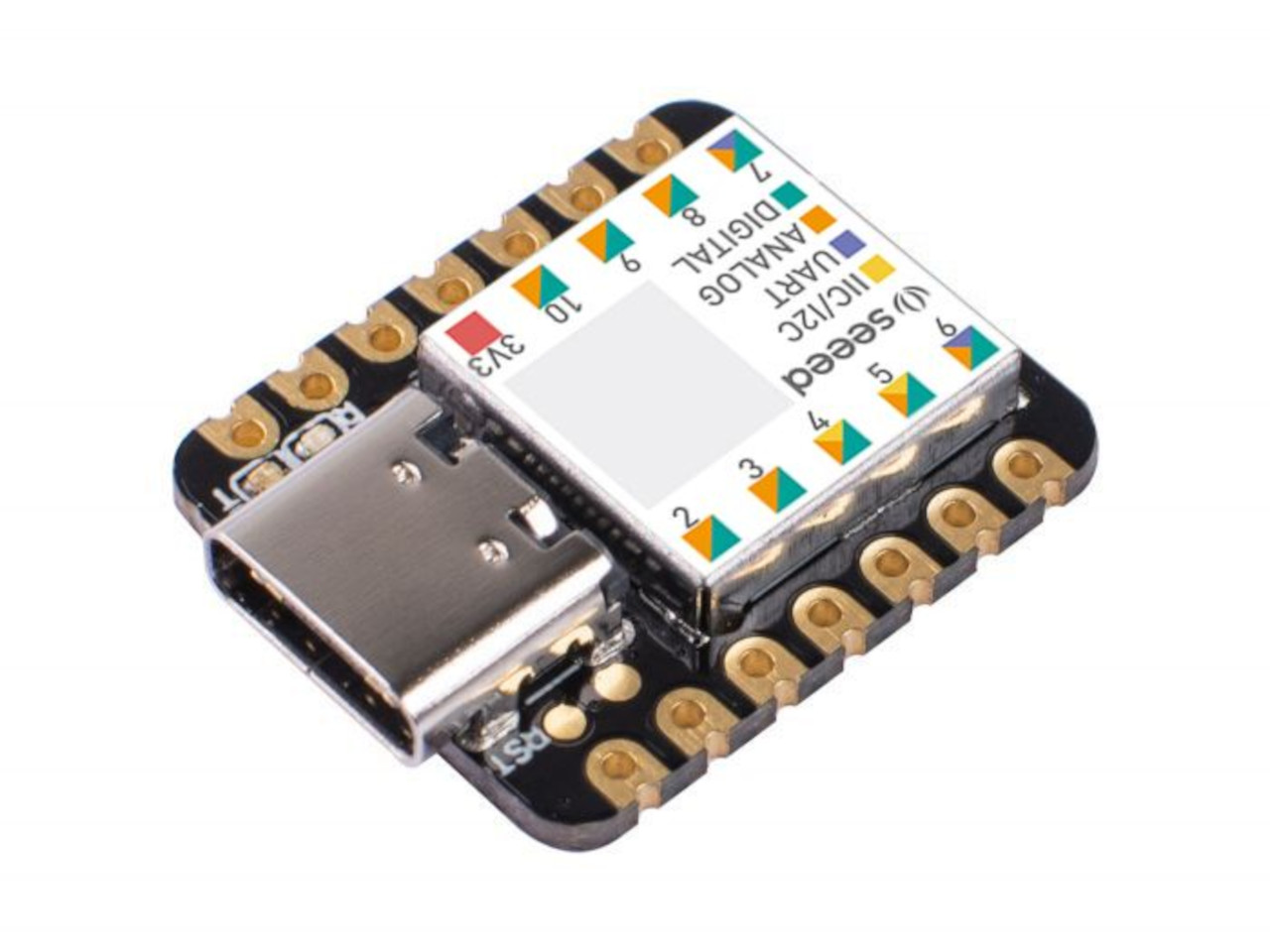
The Xiao Samd21 dev board is shown above


The table below is a comparision between all the three boards that ar currently being used by the students in our Lab this year
| Item | Seeed Studio XIAO ESP32C3 | Seeeduino XIAO | Seeed XIAO RP2040 |
|---|---|---|---|
| Processor | ESP32-C3 32-bit RISC-V @160MHz | SAMD21 M0+@48MHz | RP2040 Dual-core M0+@133Mhz |
| Wireless Connectivity | WiFi and Bluetooth 5 (LE) | N/A | N/A |
| Memory | 400KB SRAM | , 4MB onboard Flash 32KB SRAM 256KB FLASH | 264KB SRAM 2MB onboard Flash |
| Built-in Sensors | N/A | N/A | N/A |
| Interfaces | I2C/UART/SPI/I2S | I2C/UART/SPI | I2C/UART/SPI |
| PWM/Analog Pins | 11/4 | 11/11 | 11/4 |
| Onboard Buttons | Reset/ Boot Button | N/A | Reset/ Boot Button |
| Onboard LEDs | Charge LED | N/A | Full-color RGB/ 3-in-one LED |
| Battery Charge Chip | Built-in | N/A | N/A |
| Programming Languages | Arduino | Arduino/ CircuitPython | Arduino/ MicroPython/ CircuitPython Arduino/ MicroPython/ CircuitPython |
The Seeed Xiao SAMD21, ESP32, and RP2040 are all microcontroller architectures commonly used in the field of embedded systems and IoT applications. Each architecture has its own strengths and features that make it suitable for different use cases.
The Seeed Xiao SAMD21 is based on the Atmel SAMD21 microcontroller, featuring a 32-bit ARM Cortex-M0+ core. It offers a good balance between performance and power efficiency, making it suitable for low-power applications. The SAMD21 architecture is known for its rich peripheral set, including UART, I2C, SPI, and USB interfaces, enabling seamless integration with various devices. It also has a solid ecosystem of libraries and development tools, making it easy to program and develop applications.
On the other hand, the ESP32 architecture is based on the Xtensa LX6 dual-core processor, which provides higher processing power compared to the SAMD21. The ESP32 is known for its built-in Wi-Fi and Bluetooth connectivity, making it ideal for IoT applications that require wireless communication. It also offers a wide range of peripherals, including GPIO, I2C, SPI, and UART, making it highly versatile. The ESP32 ecosystem is well-established, with a vast community and extensive documentation.
The RP2040, developed by Raspberry Pi, features a dual-core ARM Cortex-M0+ processor. It is specifically designed for low-cost microcontroller applications and offers high-performance computing capabilities. The RP2040 stands out for its Programmable I/O (PIO) subsystem, which allows for custom waveform generation and timing-sensitive tasks. It supports various interfaces, including SPI, I2C, and UART, and also offers a dedicated USB 1.1 controller.
In summary, the Seeed Xiao SAMD21 excels in power efficiency and a rich peripheral set, while the ESP32 is renowned for its wireless connectivity options. The RP2040 stands out with its cost-effectiveness and the unique PIO subsystem. Choosing the most suitable architecture depends on the specific requirements of the project, such as power consumption, wireless connectivity, and the need for specialized features like custom waveform generation.